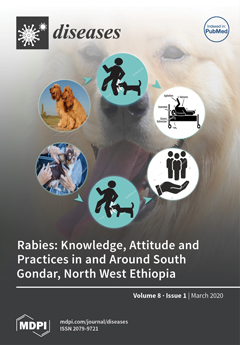Citrin is a liver-specific mitochondrial aspartate–glutamate carrier encoded by
SLC25A13. Citrin deficiency caused by
SLC25A13 mutation results in carbohydrate toxicity, citrullinemia type II, and fatty liver diseases, the mechanisms of some of which remain unknown. Citrin shows a functional homolog in yeast
[...] Read more.
Citrin is a liver-specific mitochondrial aspartate–glutamate carrier encoded by
SLC25A13. Citrin deficiency caused by
SLC25A13 mutation results in carbohydrate toxicity, citrullinemia type II, and fatty liver diseases, the mechanisms of some of which remain unknown. Citrin shows a functional homolog in yeast aspartate-glutamate carrier (Agc1p) and
agc1Δ yeasts are used as a model organism of citrin deficiency. Here, we found that
agc1Δ yeasts decreased fat utilization, impaired NADH balance in peroxisomes, and decreased chronological lifespan. The activation of
GPD1-mediated NAD
+ regeneration in peroxisomes by
GPD1 over-expression or activation of the malate–oxaloacetate NADH peroxisomal shuttle, by increasing flux in this NADH shuttle and over-expression of
MDH3, resulted in lifespan extension of
agc1Δ yeasts. In addition, over-expression of
PEX34 restored longevity of
agc1Δ yeasts as well as wild-type cells. The effect of
PEX34-mediated longevity required the presence of the
GPD1-mediated NADH peroxisomal shuttle, which was independent of the presence of the peroxisomal malate–oxaloacetate NADH shuttle and
PEX34-induced peroxisome proliferation. These data confirm that impaired NAD
+ regeneration in peroxisomes is a key defect in the yeast model of citrin deficiency, and enhancing peroxisome function or inducing NAD
+ regeneration in peroxisomes is suggested for further study in patients’ hepatocytes.
Full article





